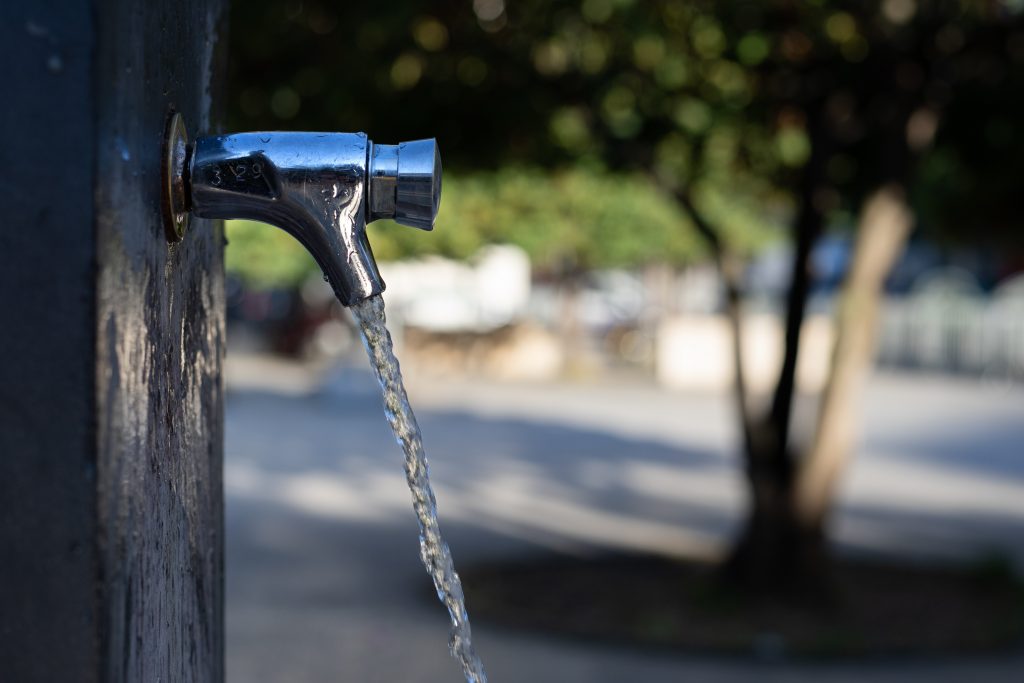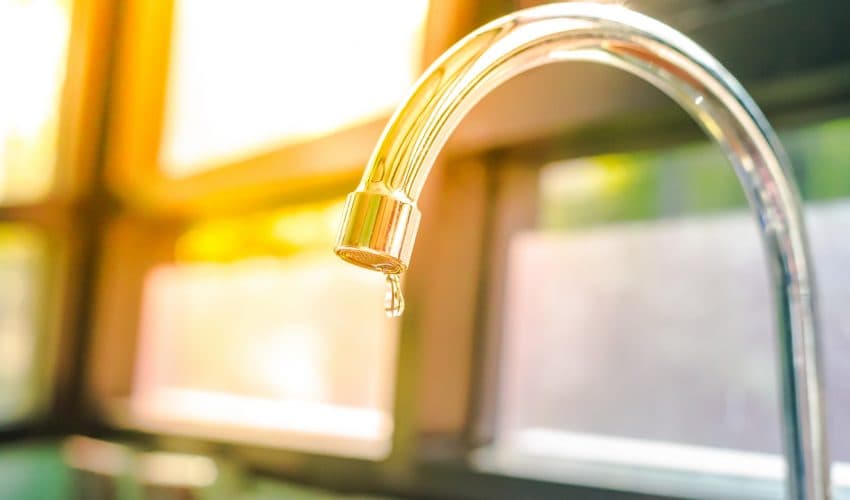Which Busted Faucets Have to Be Corrected Immediately
Which Busted Faucets Have to Be Corrected Immediately
Blog Article
We've encountered the article about How to Fix a Leaky Faucet below on the web and concluded it made sense to relate it with you over here.

Introduction
A leaky tap could look like a minor aggravation, yet its consequences prolong much past the periodic drip. Recognizing the impacts of a dripping faucet is essential for both house owners and the atmosphere. In this article, we'll check out the different influences of this common family problem and why addressing it immediately is important.
Reasons For Leaky Faucets
Leaky taps can arise from a variety of factors, including wear and tear, high water stress, and deterioration. Over time, the continuous use of faucets can lead to damaged seals and gaskets, creating leaks to create. Additionally, too much water pressure can place strain on plumbing components, resulting in leakages. Rust and corrosion can also deteriorate faucet components, making them susceptible to leak.
Water Wastage
Among one of the most considerable effects of a leaky tap is water wastage. Even a small drip can amount to gallons of wasted water with time. This not only increases water bills but also contributes to water deficiency and environmental deterioration. Addressing dripping faucets promptly is critical for saving this valuable source and reducing its influence on the world.
Financial Influence
In addition to wasting water, dripping faucets can likewise have a significant financial influence. Enhanced water costs are a direct consequence of water waste, setting you back homeowners hundreds of dollars yearly. Additionally, the price of fixing water damages caused by leakages can be significant, specifically if left neglected for an extended period.
Ecological Impact
The environmental effect of leaking taps expands past water waste. By preserving water, house owners can add to more comprehensive initiatives to reduce water shortage and secure all-natural ecological communities. Lasting options such as rainwater harvesting and water-efficient fixtures can further reduce the environmental footprint of household water usage.
Technical Solutions
Developments in technology have led to the growth of wise faucets and water-saving tools that assist reduce water wastage. Smart taps utilize sensors to spot motion and readjust water circulation appropriately, minimizing waste without compromising benefit. Water-saving devices such as aerators and low-flow showerheads are additionally effective in preserving water without jeopardizing performance.
Global Viewpoints
While leaky taps might appear like a localized concern, they add to broader worldwide obstacles such as water deficiency and climate adjustment. In regions already dealing with water stress, every drop counts, making leak avoidance and repair work important. By taking on water-saving practices and buying sustainable technologies, home owners can play their part in addressing these pushing global problems.
Regulatory Procedures
Government regulations play a critical function in reducing the influence of leaky taps and advertising water conservation. From constructing codes that need water-efficient components to water-saving rewards and rebates, policymakers have a range of devices at their disposal. By implementing and applying these laws, governments can make certain that property owners prioritize water preservation in their every day lives.
Community Effect
Resolving leaky faucets calls for collective efforts at the area degree. By increasing understanding regarding the value of water conservation and giving sources for leakage discovery and repair work, local authorities can empower home owners to act. Campaigns such as water-saving discount programs and leak discovery projects can incentivize actions change and advertise accountable water use.
Situation Researches
Real-life instances of the effect of leaky faucets underscore the significance of proactive maintenance and prompt repairs. From water damages to increasing water expenses, the repercussions of neglecting leaks can be serious. By sharing these case studies, property owners can much better understand the value of resolving dripping faucets promptly.
Educational Campaigns
Educational projects play a crucial duty in elevating understanding about the results of dripping taps and promoting water conservation techniques. With workshops, seminars, and online sources, home owners can find out just how to identify and fix leaks themselves. By empowering people with understanding and tools, instructional campaigns can foster a society of responsible water usage within areas.
Health and wellness Worries
Leaking taps can develop favorable environments for mold and mildew and mildew development, presenting health and wellness risks to owners. The existence of mold and mildew can worsen respiratory concerns and allergies, specifically in susceptible individuals. Furthermore, water damages resulting from leakages can compromise the structural honesty of buildings and cause costly fixings.
DIY vs. Specialist Repair work
When confronted with a leaky tap, property owners frequently debate whether to try repairs themselves or work with an expert plumber. While DIY repair services can conserve cash, they might not constantly address the underlying issue effectively. Specialist plumbing professionals have the know-how and devices to detect and deal with leakages correctly, guaranteeing long-lasting solutions and comfort for property owners.
Safety nets
Stopping leaking taps calls for regular upkeep and positive steps. Straightforward tasks such as changing worn-out washing machines and seals can avoid leakages from creating. Additionally, updating to high-quality components and reducing water pressure can assist extend the lifespan of faucets and reduce the danger of leakages.
Verdict
In conclusion, the effects of a leaking faucet prolong far past the occasional drip. From water wastage and boosted water bills to health and wellness worries and ecological influence, the effects of ignoring leaks can be considerable. By dealing with leaking taps promptly and adopting water-saving practices, property owners can reduce these results and add to a more sustainable future.
Why You Shouldn’t Ignore a Leaky Faucet in Your Home
What Causes a Leaky Faucet?
Various factors can cause a leak, from loose and worn-out parts to corrosion. Your faucet has four essential components from which most plumbing issues will stem: the O-ring, the valve seat, the washer and the gasket.
What Is an O-Ring?
The O-ring is a stem screw that fastens parts of the faucet in place, preventing water from leaking out of the spout. Depending on your faucet type, the stem might have multiple O-rings. Water will drip from the faucet’s handles and base if this part breaks or deteriorates.
What Is a Valve Seat?
The valve seat controls the flow and temperature of the water. Found at the base of the handle, it works as a seal for the faucet’s stem. The valve seat ensures the water is allowed to flow or is blocked as the handles dictate. You’ll know it’s malfunctioning when water leaks from your faucet’s sides.
What Is a Gasket?
The gasket is found between the water inlet and the valve stem. It creates a seal between the faucet and the sink, holding its joints by aerators attached to the stem’s head. Water will trickle out from the base if the gasket isn’t working.
What Is a Washer?
The washer secures the handles and prevents leakage, serving a similar purpose to the O-ring. While the O-ring is ordinarily round and made from an elastic material, such as rubber, the washer is square-shaped and composed of brass, copper and other hard metals. If it malfunctions, corrodes or has been improperly installed, water will leak out of the handles, causing that incessant faucet drip.
Why Is a Leaky Faucet Dangerous?
A leaky faucet left alone for too long can have significant consequences.
Pest Infestations
Since bugs and rodents gravitate towards the scent of water, a leaky faucet will draw pests to your sink. Both are looking for leaks accessible through crawl spaces, which a faucet provides. If you leave water dripping for too long, you run the risk of an infestation.
Rust
If one of the faucet parts has started to corrode, the resulting rust can spread to your pipes and valves with startling speed. The rust might even lead to cracks or other impairments, resulting in more severe plumbing issues.
Your sink could also sustain damage from a leaky faucet. The water in your tap possesses sparse elements of calcium and iron that can stain your sink with repeated and prolonged exposure. Once those elements in the water have been open to the air for some time, your sink will start to rust, creating marks that can be difficult to remove.
https://www.tomsmechanical.com/blog/why-you-shouldnt-ignore-a-leaky-faucet-in-your-home

As a keen person who reads about Potential Health Risks Associated With Leaky Faucets, I was thinking sharing that blog post was really helpful. Sharing is good. You won't know, you will be helping someone out. Thanks for going through it.
Report this page